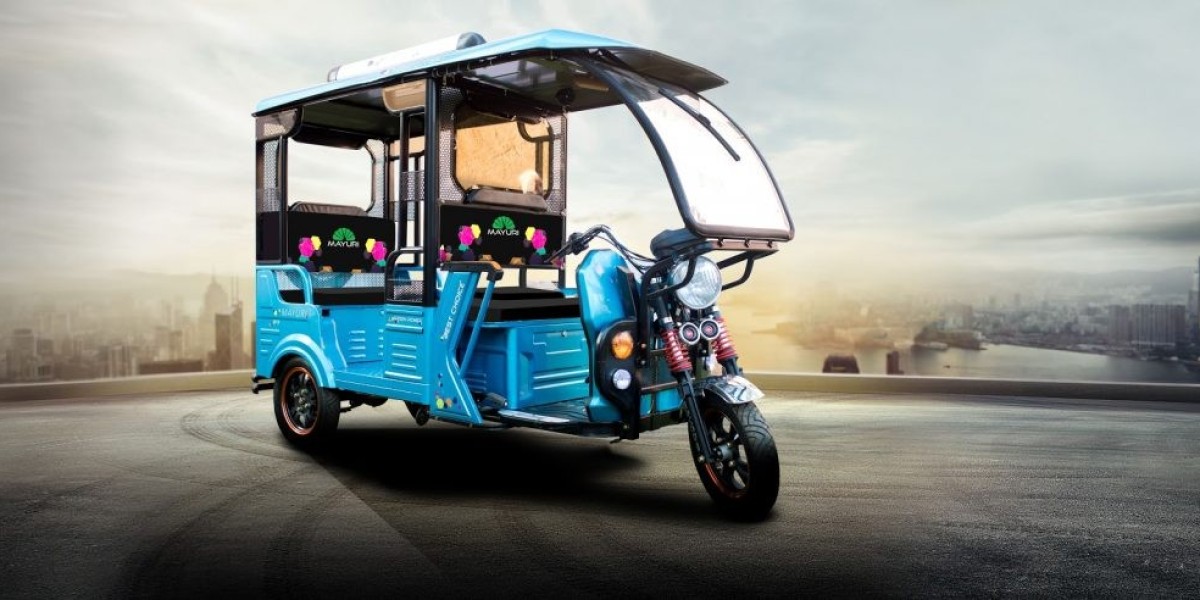IMARC Group’s “E-Rickshaw Manufacturing Plant Project Report 2025: Industry Trends, Plant Setup, Machinery, Raw Materials, Investment Opportunities, Cost and Revenue” report provides a comprehensive guide on how to successfully set up a e-rickshaw manufacturing plant. The report offers clarifications on various aspects, such as unit operations, raw material requirements, utility supply, infrastructural needs, machinery models, labour necessities, transportation timelines, packaging costs, etc.
In addition to the operational aspects, the report also provides in-depth insights into e-rickshaw manufacturing plant cost, project economics, encompassing vital aspects such as capital investments, project funding, operating expenses, income and expenditure projections, fixed and variable costs, direct and indirect expenses, expected ROI, net present value (NPV), profit and loss account, and thorough financial analysis, among other crucial metrics. With this comprehensive roadmap, entrepreneurs and stakeholders can make informed decisions and venture into a successful e-rickshaw manufacturing unit.
Request a Sample Report: https://www.imarcgroup.com/e-rickshaw-manufacturing-plant-project-report/requestsample
What is E-Rickshaw?
An E-Rickshaw, or electric rickshaw, is a battery-operated three-wheeled vehicle primarily used for short-distance public transportation. Designed as an eco-friendly alternative to traditional auto-rickshaws and cycle rickshaws, E-Rickshaws run on electric motors powered by rechargeable batteries, usually lead-acid or lithium-ion. These vehicles typically accommodate 3–4 passengers and are widely used in urban and semi-urban areas for their affordability, low maintenance, and zero tailpipe emissions. Their structure consists of a lightweight metal frame, electric drivetrain, and simple suspension system. Compared to fuel-based vehicles, E-Rickshaws are quieter, cheaper to operate, and help reduce dependence on fossil fuels. They are increasingly popular in countries like India, Bangladesh, Nepal, and China, contributing to last-mile connectivity and employment opportunities for low-income drivers. With growing emphasis on sustainable transportation and government incentives, E-Rickshaws are becoming a vital component in the shift toward green urban mobility in developing nations.
Market Trend and Drivers of E-Rickshaw:
Several factors are propelling the widespread adoption of E-Rickshaws. First and foremost is the rising demand for affordable and sustainable last-mile transportation, especially in congested urban and semi-urban areas. The low operational cost, due to electricity being cheaper than petrol or diesel, makes E-Rickshaws attractive to drivers and passengers alike. Government policies and subsidies aimed at promoting electric mobility, such as financial incentives, interest-free loans, and relaxed registration norms, are also boosting adoption. Additionally, environmental concerns are pushing cities to reduce vehicular emissions, making E-Rickshaws a viable solution. Technological improvements in battery performance and vehicle design have enhanced reliability and efficiency, increasing user confidence.
Key Aspects to Setup a E-Rickshaw Plant:
- Location to Setup Plant
- Market Research
- Plant Layout
- Construction and Infrastructure
- Equipment/Machinery Procurement
- Documentation and Licenses
- Cost Analysis
Requirements to Setup a Facility:
- Funds
- Machinery
- Lands
Types of Costs to Setup a Factory:
- Land, Location and Site Development Cost
- Plant Layout Cost
- Machinery Requirements and Costs
- Raw Material Requirements and Costs
- Packaging Requirements and Costs
- Transportation Requirements and Costs
- Utility Requirements and Costs
- Human Resource Requirements and Costs
Project Economics:
- Capital Investments
- Operating Costs
- Expenditure Projections
- Revenue Projections
- Taxation and Depreciation
- Profit Projections
- Financial Analysis
Key Questions Answered in the Report:
- How has the e-rickshaw market performed so far and how will it perform in the coming years?
- What is the market segmentation of the global e-rickshaw market?
- What is the regional breakup of the global e-rickshaw market?
- What are the price trends of various feedstocks in the e-rickshaw industry?
- What is the structure of the e-rickshaw industry and who are the key players?
- What are the various unit operations involved in a e-rickshaw manufacturing plant?
- What is the total size of land required for setting up a e-rickshaw manufacturing plant?
- What is the layout of a e-rickshaw manufacturing plant?
- What are the machinery requirements for setting up a e-rickshaw manufacturing plant?
- What are the raw material requirements for setting up a e-rickshaw manufacturing plant?
- And more…
How IMARC Can Help?
IMARC Group is a global management consulting firm that helps the world’s most ambitious changemakers to create a lasting impact. The company provide a comprehensive suite of market entry and expansion services. IMARC offerings include thorough market assessment, feasibility studies, company incorporation assistance, factory setup support, regulatory approvals and licensing navigation, branding, marketing and sales strategies, competitive landscape and benchmarking analyses, pricing and cost research, and procurement research.
Services:
- Plant Setup
- Factoring Auditing
- Regulatory Approvals, and Licensing
- Company Incorporation
- Incubation Services
- Recruitment Services
- Marketing and Sales
Contact Us:
IMARC Group
134 N 4th St. Brooklyn, NY 11249, USA
Email: sales@imarcgroup.com
Tel No:(D) +91 120 433 0800
United States: +1-631-791-1145






